These are the final few photos from the brief trip further south, not really fitting any particular category so don’t expect a theme (like you normally do.) Mostly random, while still being in my deplorable style and subject matter.
While I did an earlier post regarding birds, this anecdote didn’t quite fit in. Our Host had been showing off the various nest boxes around their yard and was about to display the baby bluebirds, but on opening the box, it wasn’t bluebirds she found, or even blue.

That’s a yellow rat snake (Pantherophis obsoleta quadrivittata,) the first I’ve ever seen, though Our Host tells us they’ve been found before in that area. She’s not at all fond of snakes, which makes it ironic that she’s so damned good at finding them when I’m around, and that’s not a joke. They (the snakes) also go by the name of chicken snake and eastern rat snake – inexcusable since there are way too many “eastern” named species around, c’mon get creative – but they’re closely related to the black rat snake, so we’re going with this one. After a couple of pics in situ, I reached in and drew it out for a better view, and The Girlfriend’s Sprog wielded the camera for that bit.
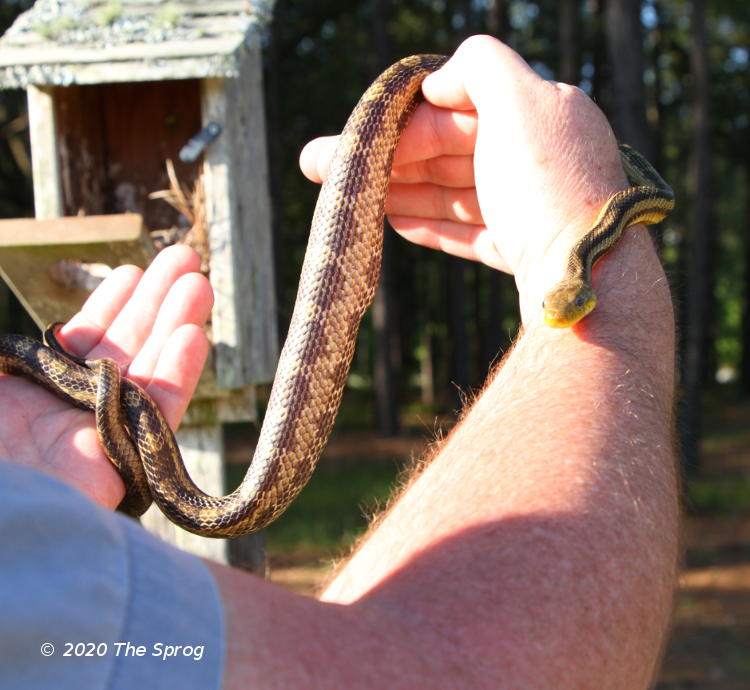
This frame shows the coloration and size, the bulges from the consumed nestlings, and even the nest box in the background – nicely framed! The snake was only about a meter in length (though much thinner than gators of the same length,) about half of full grown size. It was incredibly docile, not making the faintest attempt to strike and only token motions to escape. Against Our Host’s judgment, I took it a few hundred meters off and released it into the woods – this is what they eat, after all, and a nest box atop a broad fence post isn’t going to deter strong climbers like the rat snake family.
Previously, I’ve found plenty of snakes on their property, mostly around the pond they have, and made a search on two separate nights of this trip, not finding a sign of any. This might have been due to the recent flooding that they underwent, which caused the pond to surmount all of its banks and extend into the yard for a bit, but it was a little disappointing nonetheless. What I did find were the typical subjects that I can almost always find around here, but hey, if I only post the one snake I’m not doing my part in maintaining the creepy vibe that I’ve nurtured for this site.

The pond did play home to numerous six-spotted fishing spiders (Dolomedes triton) of varying sizes, and if you know fishing spiders, this means anything from comfortably fitting within a dime with all legs spread to potentially puncturing your car tire if they bit it. This one split that difference, but had drawn attention to itself by cavorting with seeming abandon across the water, stopping at one point and raising itself high on its legs like it was standing on tippy-toe (who coined that damn phrase anyway?) before diddybopping over to pause on a branch where I could photograph it easily. What I find interesting about this photo is that one of the legs appears to actually belong to something else, like when people imitate kali by sitting close behind one another and sticking their arms out. Yeah, I’m in one of those moods.
Also in evidence was a largish wolf spider, keeping to what dry land it could find.

Some of the wolf spiders (genus Lycosidae) and some of the fishing spiders actually look a lot alike, but it’s the eye pattern that betrays their difference. Granted, you have to get pretty damn close to determine this, and for a lot of people, this is at least half a klick closer than they prefer. If you really need to know, the rear/top outside eyes on fishing spiders are more in line with the rear inside (main) eyes, while the wolf has them sitting further back like afterthoughts of the spider creator – you can see a comparison photo here, or use BugGuide.net’s handy illustrations (fishing spiders, Dolomedes, are found under Nursery Web spiders.) This guy and many others were all found at night with the headlamp, since their eyes throw such distinct reflections, but seriously, don’t do this in the woods if spiders creep you out because you really don’t need to know just how damn many of them there are around you.
Let’s take a scenic break.
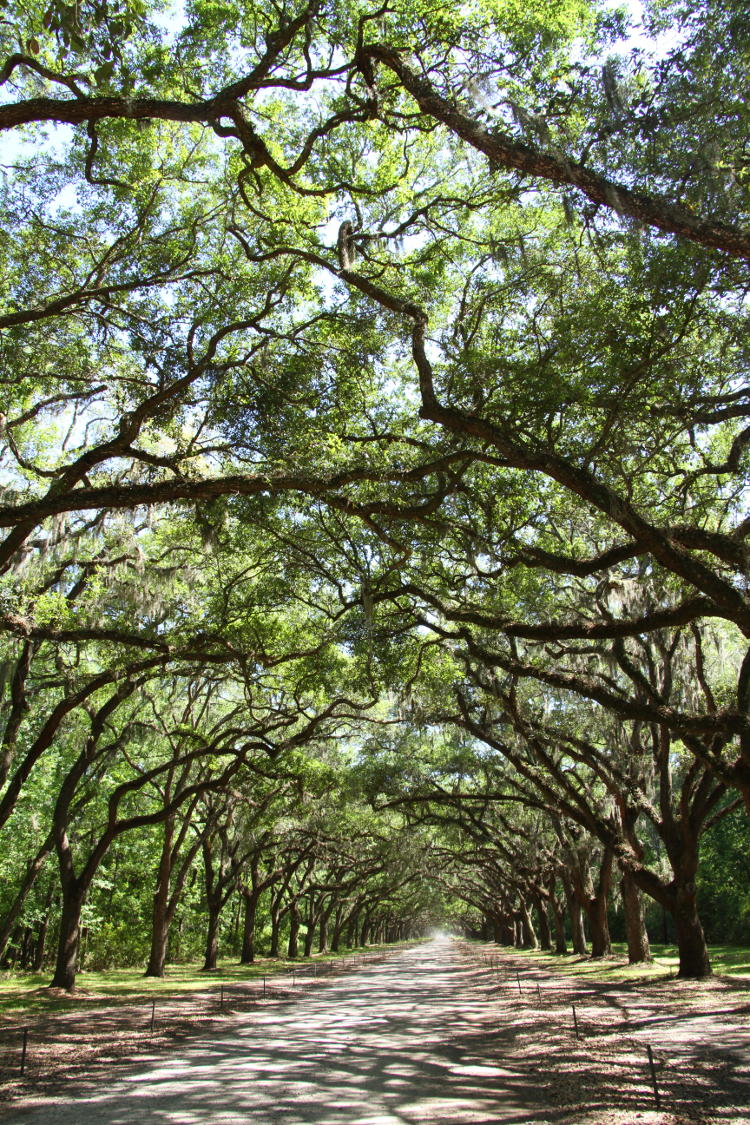
One of the few other places we checked out, on a whim, was the Wormsloe Estate near Skidaway Island, southeast of Savannah. It was brief, since it was later in the afternoon and near closing time, but I fired off a few shots while there, like the one above of the entrance drive. No snakes found there either, though it bordered some wetlands which should have been prime cottonmouth habitat. We did find a lot of fiddler crabs and I shot some video clips, which might appear later on if I get some more to make a decent length film (like, longer than ten seconds.) But there were some marvelous old trees to be found, just in harsh light that made it difficult to capture well.
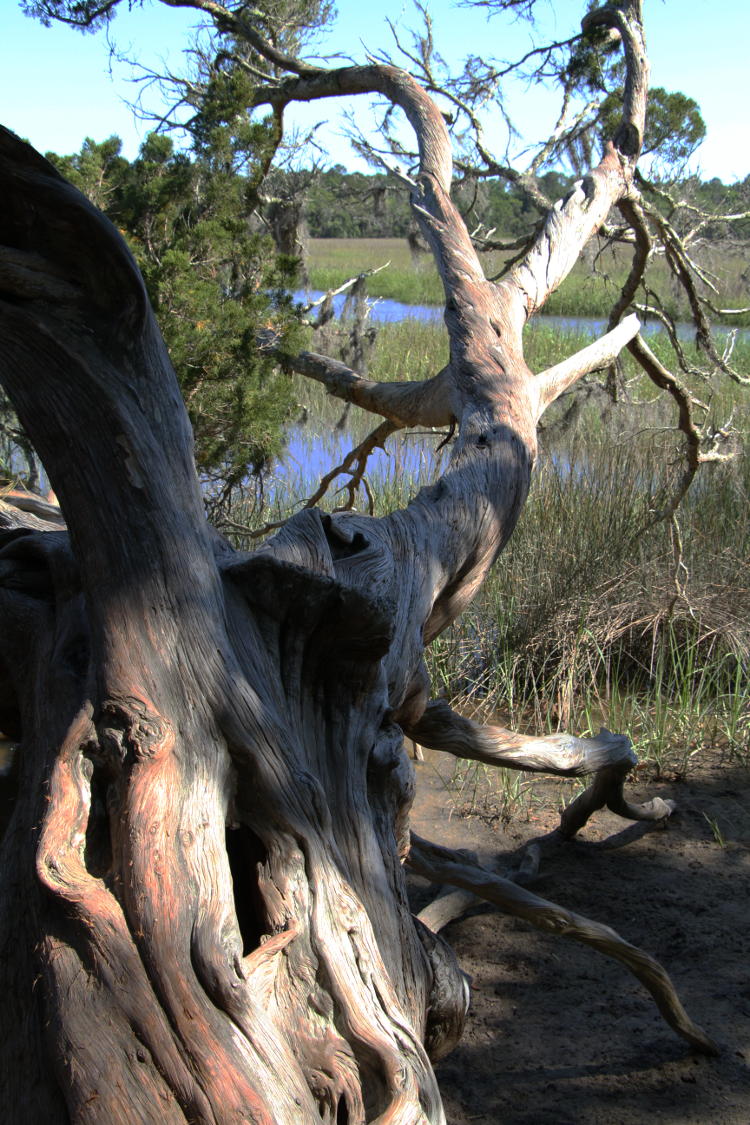
In the peaty mud at the base of this were the fiddlers, disappearing when danger threatened but reappearing within only a minute.
I also happened to like this old tree from the Savannah National Wildlife Refuge.
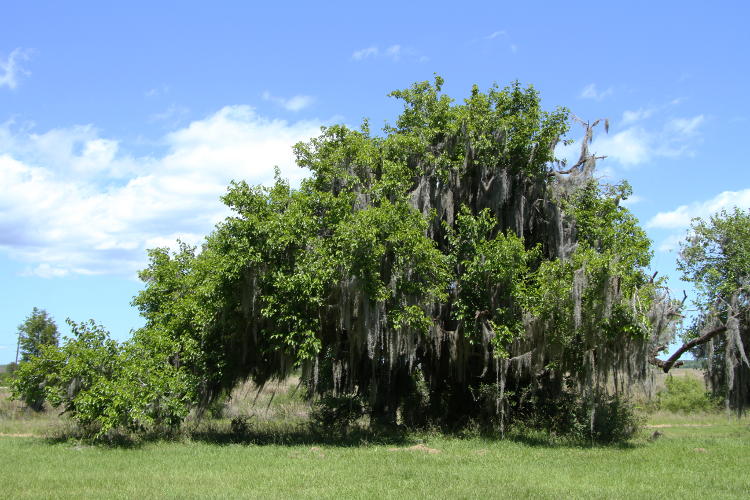
… though it should be noted, with the closing of public facilities, this was serving as the Refuge’s Men’s Room…
Another tree that we picnicked under, that it took the ultra-wide lens to do justice to.
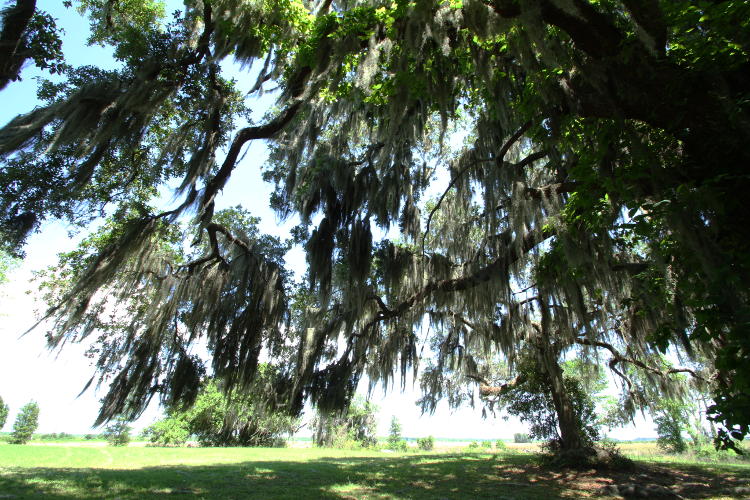
I kinda feel the need to clarify this for anyone that hasn’t ever visited the southeastern US, but Spanish moss really can grow anywhere and creates its own moody scenery without any intervention. Nor is it anchored or parasitic or anything; it simply pulls free if you try, like tinsel. Pretty curious plant all on its own.
One morning dawned fairly foggy, with great wisps of it twisting and rising off of the pond, though I hadn’t grabbed the tripod and so couldn’t get anything decent of that, so I settled for a web in an overgrown field.

I also need to say (I need to. Really.) that we arrived there just at the start of love bug season, which is both good and bad. I’ve seen it much, much worse, but it did mean that I had to clean the windshield twice in three days.

I initially had ‘love bug’ in quotes, thinking it was a colloquial name, but no, it’s the common name of the species, the scientific name being Plecia nearctica. This time of year is mating season, and they can appear by the millions, clustering in ideal locations and being decimated by the hundreds by passing cars – apparently they’re drawn to auto exhaust. They can remain conjoined in ecstasy for days and even fly that way, one of them facing backwards (or maybe they both fly sideways – I’ve never looked close.) Here, a patch of unidentified purple flowers in the Refuge sported a smaller cluster of white mutations, and when I leaned in close I saw that it was covered in love bugs, though in hindsight I never checked to see if it was just the mutation gaining the attention or if I simply didn’t notice them on all of the flowers.
In closing, we go back the Our Hosts’ place one evening, making me feel right at home.
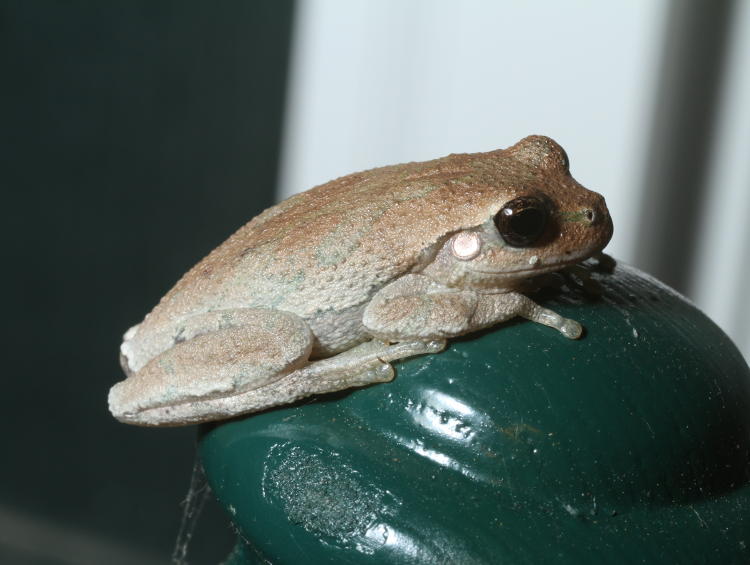
I believe this is a Cuban treefrog (Osteopilus septentrionalis,) but am not positive of that ID – they appear in a wide range of colors, and so far nothing else that I’ve looked at seems to match. They’re invasive, and my reptile guide pegged them as getting halfway up the Florida coast, having first appeared near Miami, but that book was printed decades ago and currently, they’re found throughout Florida, with various ranges given as throughout Georgia and even into South Carolina (which Savannah pretty much borders.) This was one of my identification photos, with another of the full back, and really, I should have handled it to examine the underside and inside of the hind legs, which for frogs often provides more distinctive characteristics, but I left it sitting where I found it, and “worked my magic” (snerk!) by my own shooting position instead.
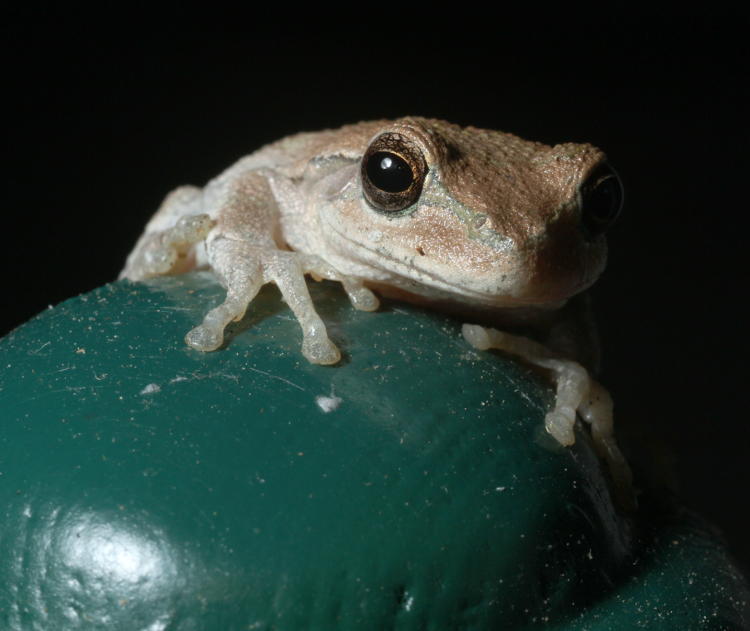
Now, if Our Hosts had chairs on their porch with crystal knobs on top instead, we’d have a great fortune teller photograph, but noooo, they had to be all rustic with wooden chairs. Sometimes you just can’t get good cooperation, so we’ll just go with this.
That’s it for this trip, except maybe not, but I really gotta get back into shooting locally, now that I have a little free time again. Kinda – there are still a lot of projects on the burner, only a couple of which might lead to something postable. Rest assured though, if it’s creepy, I’ll find it.




















































